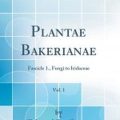John Bartram
The Franklinia
On this day In 1938, the Belvedere Daily Republican, out of Belvedere Illinois, published a small article about a tree named for Benjamin Franklin.
Here’s what it said:
"About 200 years ago, John Bartram, an eminent botanist, discovered a strange flowering tree in a Georgia forest and named it "Franklinia" in honor of his fellow Philadelphian, Benjamin Franklin."
This post was featured onThe Daily Gardener podcast:
helping gardeners find their roots,
one story at a time

John Bartram





